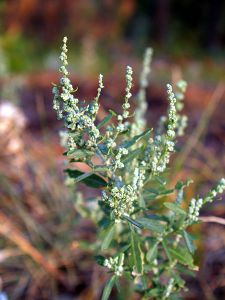UPDATE 7th May 2013: Due to hard lobbying and hundreds of thousand of people writing and sending emails in objection to the EU's "Plant Reproductive Material Law" (see below) some significant last-minute changes were written in the night before the law was presented yesterday (6th May).
These changes mitigated some of the law's more dire potential effects for seed savers and growers: "We must [however] remain vigilant to be sure it is not changed for the worse as it goes through the EU, and then is translated into UK laws."
Read The Real Seed Catalogue's update here.

Growing plants, particularly for food, and particularly in community, is a big part of the Transition experience and ethos. Many people in transition are active permaculturists. At the very least, most of us want to eat plants grown organically from good seed.
There are Seedy Saturdays and CSAs, and there's the joy of our Give and Grow events, where we swap both flower and vegetable seeds and produce.
Not only do we enjoy sowing it, saving it and exchanging it with each other, if we're to build any sort of resilience as we face an uncertain future, knowing how to grow our own food from a rich biodiversity will be vital.
I love swapping plants with people, whether for flowers, food or medicine. And I consider the free exchange of plants as a birthright for anybody born on this planet. It's certainly not something we should be dictated to about by seed corporations.
So when I was checking out The Real Seed Catalogue's website for the Huauzontle seeds I'm writing about here, and I found this:
URGENT
CALL FOR ACTION - NEW EU SEED LAW to ban all traditional vegetable
varieties unless registered and licensed!
I felt I had to share it.
I felt I had to share it.
The law will be presented at the EU in
one week on 6th
May so
do read and respond and let's make sure that great places like The
Real Seed Catalogue can
continue their business. This is from their website:
You'll find no F1 hybrids or genetically modified seed here - just varieties that do really well and taste great when grown by hand on a garden scale. The name of the catalogue reflects what we are working to provide: real seeds for real gardeners wanting to grow proper vegetables. Many are rare heirlooms, and because all are open-pollinated (non-hybrid) , you can save your own seed for future years, using the instructions we supply. There's no need to buy new seed every year!
You can't get better than that!
 Introducing HUAUZONTLE. I haven't grown this plant - yet. I hadn't heard of it until a few days ago when I spoke to Rose in Bungay and she offered me some seeds. Rose is an ex-farmer and experienced grower who was influential in the sowing of a bee-friendly wildflower meadow with Bungay Community Bees two years ago. When she told me she had some Aztec broccoli seeds from the Real Seed Catalogue, my ears pricked up!
Introducing HUAUZONTLE. I haven't grown this plant - yet. I hadn't heard of it until a few days ago when I spoke to Rose in Bungay and she offered me some seeds. Rose is an ex-farmer and experienced grower who was influential in the sowing of a bee-friendly wildflower meadow with Bungay Community Bees two years ago. When she told me she had some Aztec broccoli seeds from the Real Seed Catalogue, my ears pricked up!I wondered whether there was an Aztec name for it and discovered it was Huauzontle, an ancient and domesticated crop in the Americas, still cultivated but, like Fat Hen here (another Chenopodium), mainly considered a weed.
I have some Mexican Cigar plant given to me from Jenni in Bungay, and Toronjil (Agastache mexicana) and I've sown purple sunflower seeds, too. As well as Wild and Jasmine Tobaccos.
Then there''s Epazote (epazotl in Nahuatl, which translates as skunk sweat or filth, no less!), aka Mexican Tea or Wormseed. Skunk or no, Mexican bean dishes are just not the same without them.
I got mine last year from Dave Wrenn at Orchard End Organics in Kirstead (who has GREAT organic and biodynamic herbs!) and saved the seeds. They just germinated this weekend. Oh, and I must remember the chilis and tomatoes (tomatl). Though of course no chocolatl! Too hard to grow here.
This post on Huauzontle from Zester Daily based in Southern California, really made my mouth water! I must get those seeds from Rose...
And don't forget to read and respond to the URGENT CALL FOR ACTION - NEW EU SEED LAW to ban all traditional vegetable varieties unless registered and licensed. Let's keep the seeds real. Let's keep supporting people like The Real Seed Catalogue and Orchard End Herbs. Let's keep growing and giving!
STOP PRESS: Just saw on the Transition Bungay googlegroup from Kris that Avaaz have also set up a campaign objecting to the proposed EU seed legislation: We don't accept this. Let us keep our seeds EU!
Images: Huauzontle by Jim Pisarowicz (Wikipedia); Ready to cook, Huauzontle by Pabs004 (Wikipedia); Open source, open pollination, it's always a bit of a Mexican Garden here, incl. Epazote & Sunflowers, late summer 2012 by Mark Watson
Post adapted from Huauzontle - Let's Grow from Real Seeds, first published on Mark in Flowers blog Fri 26th April 2013




























